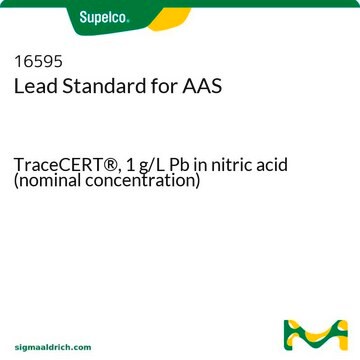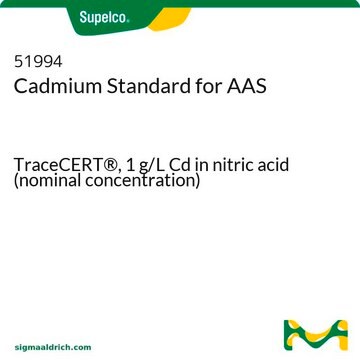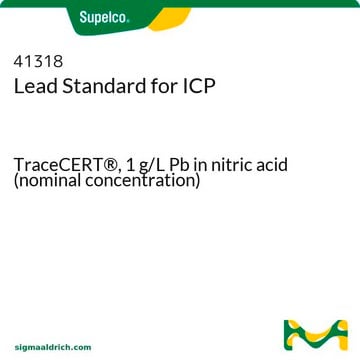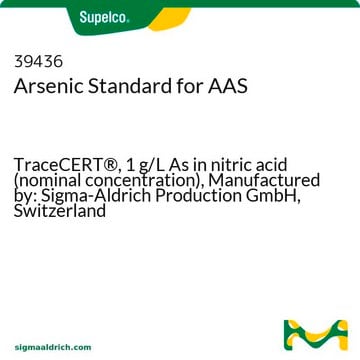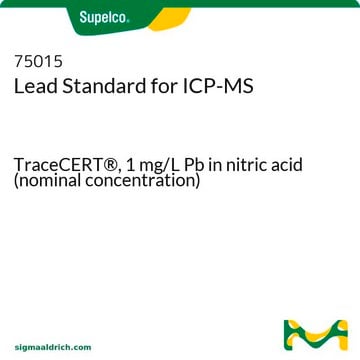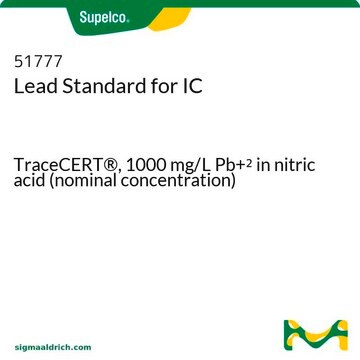18-0870
Lead standard solution
suitable for atomic absorption spectrometry, 1 mg/mL Pb, 1000 ppm Pb
Synonym(s):
Lead(II) nitrate solution
About This Item
Recommended Products
grade
SAJ special grade
form
liquid
availability
available only in Japan
concentration
1 mg/mL Pb
1000 ppm Pb
suitability
suitable for atomic absorption spectrometry
SMILES string
[Pb]
InChI
1S/Pb
InChI key
WABPQHHGFIMREM-UHFFFAOYSA-N
Looking for similar products? Visit Product Comparison Guide
Signal Word
Danger
Hazard Statements
Precautionary Statements
Hazard Classifications
Aquatic Acute 1 - Aquatic Chronic 2 - Carc. 2 - Eye Dam. 1 - Repr. 1A - Skin Sens. 1 - STOT RE 2
Target Organs
Blood,Central nervous system,Immune system,Kidney
Storage Class Code
6.1D - Non-combustible acute toxic Cat.3 / toxic hazardous materials or hazardous materials causing chronic effects
WGK
WGK 3
Flash Point(F)
Not applicable
Flash Point(C)
Not applicable
Personal Protective Equipment
Choose from one of the most recent versions:
Already Own This Product?
Find documentation for the products that you have recently purchased in the Document Library.
Our team of scientists has experience in all areas of research including Life Science, Material Science, Chemical Synthesis, Chromatography, Analytical and many others.
Contact Technical Service